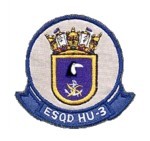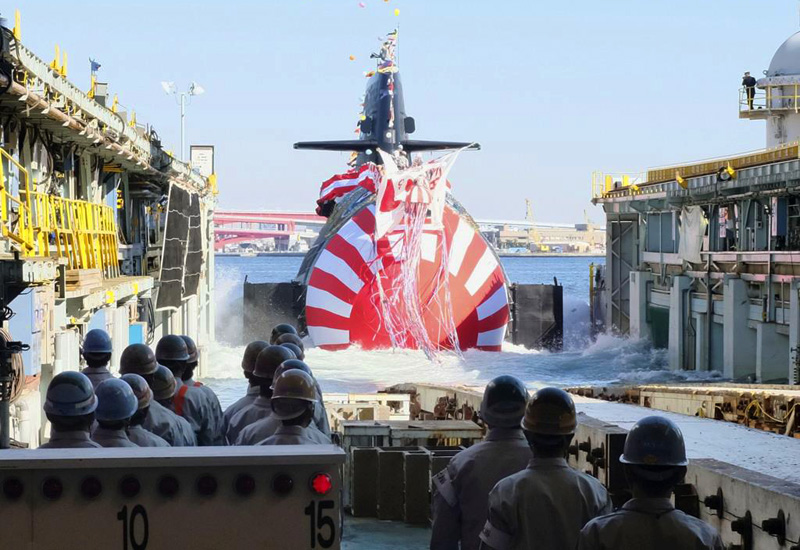Marinha do Japão
Moderador: Conselho de Moderação
- cabeça de martelo
- Sênior

- Mensagens: 39492
- Registrado em: Sex Out 21, 2005 10:45 am
- Localização: Portugal
- Agradeceu: 1137 vezes
- Agradeceram: 2850 vezes
- J.Ricardo
- Sênior

- Mensagens: 7583
- Registrado em: Qui Jan 13, 2005 1:44 pm
- Agradeceu: 2539 vezes
- Agradeceram: 1020 vezes
Re: Marinha do Japão
A vela lembra o Akula II.
Não temais ímpias falanges,
Que apresentam face hostil,
Vossos peitos, vossos braços,
São muralhas do Brasil!
Que apresentam face hostil,
Vossos peitos, vossos braços,
São muralhas do Brasil!
-
Stormnuken
- Júnior

- Mensagens: 61
- Registrado em: Sáb Ago 15, 2009 5:17 pm
- Agradeceu: 122 vezes
- Agradeceram: 9 vezes
- akivrx78
- Sênior

- Mensagens: 6497
- Registrado em: Dom Fev 08, 2009 8:16 am
- Agradeceu: 112 vezes
- Agradeceram: 340 vezes
Re: Marinha do Japão
Segunda unidade da classe Maya vai ser lançado ao mar no próximo mês.
Maya iniciou os testes de mar.
- vplemes
- Sênior

- Mensagens: 1047
- Registrado em: Ter Ago 11, 2009 10:10 pm
- Agradeceu: 168 vezes
- Agradeceram: 159 vezes
Re: Marinha do Japão
Lindo e imponente este navio! Mas essa classe vão ser apenas dois mesmo? Se for este o caso, será uma pena.
- akivrx78
- Sênior

- Mensagens: 6497
- Registrado em: Dom Fev 08, 2009 8:16 am
- Agradeceu: 112 vezes
- Agradeceram: 340 vezes
Re: Marinha do Japão
Sim vai ser somente duas unidades.
Eles precisam trocar umas 20 escoltas em menos de uma década por isto a próxima classe vai ser menor, com custos menores de manutenção e aquisição, ate o momento eles sempre mantinham o mesmo numero de tripulação em escoltas novas este vai ser o primeiro navio que a tripulação vai ser reduzida pela metade, mas mesmo assim terá 2 turnos totalizando 100 tripulantes pois o navio pode ser operado por 40 tripulantes.
Eles precisam trocar umas 20 escoltas em menos de uma década por isto a próxima classe vai ser menor, com custos menores de manutenção e aquisição, ate o momento eles sempre mantinham o mesmo numero de tripulação em escoltas novas este vai ser o primeiro navio que a tripulação vai ser reduzida pela metade, mas mesmo assim terá 2 turnos totalizando 100 tripulantes pois o navio pode ser operado por 40 tripulantes.
- FCarvalho
- Sênior

- Mensagens: 37916
- Registrado em: Sex Mai 02, 2003 6:55 pm
- Localização: Manaus
- Agradeceu: 5728 vezes
- Agradeceram: 3265 vezes
Re: Marinha do Japão
Navios menores na marinha nipõnica significam via de regra algo com no mínimo umas 4 mil toneladas de deslocamento.
Abaixo disso é guarda costeira.
abs
Abaixo disso é guarda costeira.
abs
Carpe Diem
- akivrx78
- Sênior

- Mensagens: 6497
- Registrado em: Dom Fev 08, 2009 8:16 am
- Agradeceu: 112 vezes
- Agradeceram: 340 vezes
Re: Marinha do Japão
$3.3 billion sale to Japan of 73 SM-3 ballistic missile interceptors approved
Staff Writer Staff Writer August 28, 2019
2 minutes read
The U.S. State Department has approved the sale to Japan of up to 73 Standard Missile-3 (SM-3) Block IIA interceptor missiles plus support at an estimated cost of $3.295 billion, the Defense Security Cooperation Agency said in a release.
Also included in the proposed sale are Mk 29 Canisters with packing, handling, storage, and transportation (PHS&T) kits, up to 10 Special Assignment Airlift Mission flights, technical assistance, engineering and logistical support services and other support, the Tuesday, August 27 release said.
“This proposed sale will support the foreign policy and national security of the United States by improving the security of a major ally that is a force for political stability and economic progress in the Asia-Pacific region,” the release said. “It is vital to U.S. national interests to assist Japan in developing and maintaining a strong and effective self-defense capability.”
The proposed sale will “assist in defending the Japanese homeland and U.S. personnel stationed there,” the release added.
The prime contractor for the SM-3 Block IIA missiles will be Raytheon Missile Systems, while BAE Systems will be the prime contractor for the canisters and PHS&T kits.
The SM-3 Block IIA is being developed by the U.S. and Japan as part of the Aegis Ballistic Missile Defense system. The missile is jointly developed by Raytheon and Mitsubishi Heavy Industries, with Mitsubishi reportedly managing the third-stage rocket motor and nose cone.
It uses a kinetic warhead to strike the target, the so-called hit-to-kill approach.
The first successful test of the Block IIA variant occurred in 2015, but more recent tests have been hit-and-miss.
In October, the U.S. conducted an interception of a medium-range ballistic missile target with a Standard Missile-3 Block IIA missile during a flight test. It was the first successful test of the interceptor missile since February 2017. In December, the U.S. Navy successfully engaged and intercepted an Intermediate Range Ballistic Missile target in space with an Aegis Ashore-launched Standard Missile-3.
Aegis made up a significant portion of Japan’s record $47 billion defense budget agreed in December. The defense funding will cover the cost of introducing Japan’s Aegis Ashore land-based missile interceptor system.
The Aegis Combat System is a Lockheed Martin-made integrated naval weapons system that uses powerful computer and radar technology to track targets and guide weapons.
The system is composed of the Aegis Weapon System (AWS), the Aegis Anti-Aircraft Warfare (AAW) capability, along with the Phalanx Close In Weapon System (CIWS), and the Mark 41 Vertical Launch System for missiles.
In January 2018 it was reported that Japan was planning to integrate a new Aegis “engage on remote” missile intercept system on the Maya-class ships at a cost of 340 billion yen ($52.3 billion).
The U.S. approved the sale to Japan of four SM-3 missiles the same month, a sale that a State Department official said would “follow through on President Trump’s commitment to provide additional defensive capabilities to treaty allies threatened by the DPRK’s provocative behavior.”
In December that year, the U.S. approved the sale of eight SM-3 Block 1B missiles and 13 SM-3 Block 2A Missiles for an estimated cost of $561 million, and in April, the State Department approved the sale of up to 56 SM-3 Block 1B missiles at an estimated cost of $1.15 billion.
The latest purchase approval came as North Korea is expanding its offensive missile capabilities, having proven over the past two years the ability to launch medium- and long-range ballistic missiles, potentially nuclear-tipped, that could hit both Japan and the United States.
This month Pyongyang has carried out seven tests of new short-range ballistic missiles, at least one of which flew far enough to reach Japan.
https://thedefensepost.com/2019/08/28/u ... erceptors/
Staff Writer Staff Writer August 28, 2019
2 minutes read
The U.S. State Department has approved the sale to Japan of up to 73 Standard Missile-3 (SM-3) Block IIA interceptor missiles plus support at an estimated cost of $3.295 billion, the Defense Security Cooperation Agency said in a release.
Also included in the proposed sale are Mk 29 Canisters with packing, handling, storage, and transportation (PHS&T) kits, up to 10 Special Assignment Airlift Mission flights, technical assistance, engineering and logistical support services and other support, the Tuesday, August 27 release said.
“This proposed sale will support the foreign policy and national security of the United States by improving the security of a major ally that is a force for political stability and economic progress in the Asia-Pacific region,” the release said. “It is vital to U.S. national interests to assist Japan in developing and maintaining a strong and effective self-defense capability.”
The proposed sale will “assist in defending the Japanese homeland and U.S. personnel stationed there,” the release added.
The prime contractor for the SM-3 Block IIA missiles will be Raytheon Missile Systems, while BAE Systems will be the prime contractor for the canisters and PHS&T kits.
The SM-3 Block IIA is being developed by the U.S. and Japan as part of the Aegis Ballistic Missile Defense system. The missile is jointly developed by Raytheon and Mitsubishi Heavy Industries, with Mitsubishi reportedly managing the third-stage rocket motor and nose cone.
It uses a kinetic warhead to strike the target, the so-called hit-to-kill approach.
The first successful test of the Block IIA variant occurred in 2015, but more recent tests have been hit-and-miss.
In October, the U.S. conducted an interception of a medium-range ballistic missile target with a Standard Missile-3 Block IIA missile during a flight test. It was the first successful test of the interceptor missile since February 2017. In December, the U.S. Navy successfully engaged and intercepted an Intermediate Range Ballistic Missile target in space with an Aegis Ashore-launched Standard Missile-3.
Aegis made up a significant portion of Japan’s record $47 billion defense budget agreed in December. The defense funding will cover the cost of introducing Japan’s Aegis Ashore land-based missile interceptor system.
The Aegis Combat System is a Lockheed Martin-made integrated naval weapons system that uses powerful computer and radar technology to track targets and guide weapons.
The system is composed of the Aegis Weapon System (AWS), the Aegis Anti-Aircraft Warfare (AAW) capability, along with the Phalanx Close In Weapon System (CIWS), and the Mark 41 Vertical Launch System for missiles.
In January 2018 it was reported that Japan was planning to integrate a new Aegis “engage on remote” missile intercept system on the Maya-class ships at a cost of 340 billion yen ($52.3 billion).
The U.S. approved the sale to Japan of four SM-3 missiles the same month, a sale that a State Department official said would “follow through on President Trump’s commitment to provide additional defensive capabilities to treaty allies threatened by the DPRK’s provocative behavior.”
In December that year, the U.S. approved the sale of eight SM-3 Block 1B missiles and 13 SM-3 Block 2A Missiles for an estimated cost of $561 million, and in April, the State Department approved the sale of up to 56 SM-3 Block 1B missiles at an estimated cost of $1.15 billion.
The latest purchase approval came as North Korea is expanding its offensive missile capabilities, having proven over the past two years the ability to launch medium- and long-range ballistic missiles, potentially nuclear-tipped, that could hit both Japan and the United States.
This month Pyongyang has carried out seven tests of new short-range ballistic missiles, at least one of which flew far enough to reach Japan.
https://thedefensepost.com/2019/08/28/u ... erceptors/
- akivrx78
- Sênior

- Mensagens: 6497
- Registrado em: Dom Fev 08, 2009 8:16 am
- Agradeceu: 112 vezes
- Agradeceram: 340 vezes
Re: Marinha do Japão
Sub oficiais da Us Navy fazendo uma faxina no Mikasa.






https://pt.wikipedia.org/wiki/Mikasa_(coura%C3%A7ado)






https://pt.wikipedia.org/wiki/Mikasa_(coura%C3%A7ado)














